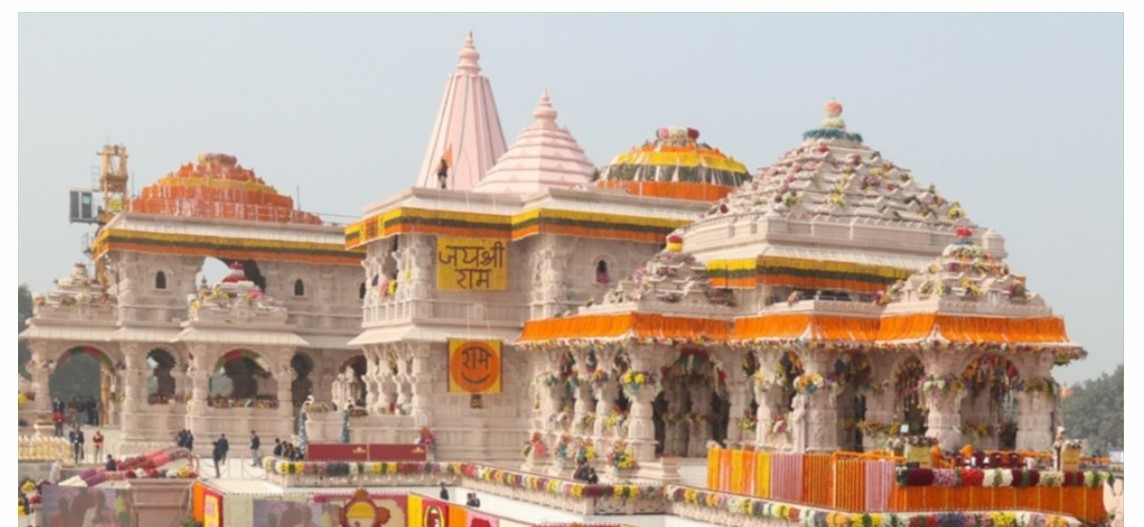

Mohit Jajoo, CEO & Director Shubhashish Homes
The transforming trend of spiritual real estate against the backdrop of rising urbanization and economic progress, is emerging as a driver of long-term economic development.
Spiritual real estate includes properties that are historically, culturally, or religiously significant, such as temples, ashrams, and pilgrimage destinations. These hallowed locations are not only significant religiously but also culturally and touristically. Spiritual places draw millions of pilgrims and visitors each year, boosting earnings in the hospitality and tourism industries. Investments in lodging, eating, transit, and entertainment facilities around these locations create jobs and boost local economies.
Development programmes targeted at protecting and repairing spiritual sites help to protect cultural assets. These programmes not only protect historical sites but also encourage tourism, which promotes long-term economic prosperity. The construction of infrastructure and facilities around spiritual places promotes real estate growth in the area. Residential and commercial projects that cater to visitors, pilgrims, and locals, increase demand for housing, retail, and commercial spaces, promoting economic activity.
Following the Supreme Court verdict in the Ram Janmabhoomi case, property rates in Ayodhya have surged dramatically. Pre-verdict, prices ranged from Rs 400 to Rs 700 per square foot. Now, they have skyrocketed to approximately Rs 1,500 to Rs 3,000 per square foot. Similarly, in the outskirts, rates have surged from Rs 1,000 to Rs 2,000 per square foot to Rs 4,000 to Rs 6,000 per square foot.
Previously, Varanasi experienced a property boom with the construction of the Kashi Vishwanath corridor. This trend extends to religious destinations like Varanasi, Vrindavan, Rishikesh, Amritsar, and Shirdi, driven by demand for hotels and second or retirement homes.
The entire region, including the Kashi Vishwanath Corridor, Banaras, and Ayodhya, is witnessing significant interest from developers and buyers, particularly in hospitality. Additionally, the outskirts of Ayodhya are attracting substantial interest for second homes, leading to a significant increase in land prices.
This surge in property prices presents opportunities and challenges. It creates lucrative prospects for developers and investors, particularly in the hospitality sector, while potentially impacting affordability, especially for mid-income housing. Balancing these factors is crucial to ensure sustainable development and customer delight.
India’s spiritual real estate has enormous potential, affecting the tourist, hospitality, and luxury living sectors. Pilgrimage sites, ashrams, yoga retreats, and heritage assets attract millions of tourists looking for spiritual consolation, boosting the economy. This distinct combination of history and modernity promotes long-term economic growth by protecting cultural heritage, fostering environmentally responsible tourism, and attracting affluent tourists. Furthermore, it creates job opportunities, boosts local companies, and promotes community development. As India strives to become a USD 5 trillion economy by 2025, harnessing its spiritual assets may play a critical role in achieving that objective, fostering equitable and sustainable prosperity while conserving the country’s unique cultural tapestry.
In conclusion, the intersection of spirituality and real estate offers a one-of-a-kind chance to promote India’s long-term economic prosperity. By capitalising on the economic potential of spiritual monuments, stakeholders may foster inclusive growth, protect cultural heritage, and promote environmental sustainability. As India strives for a more egalitarian and resilient future, seeing spiritual real estate as a driver of long-term economic prosperity offers enormous promise. Through joint efforts and creative tactics, India can use its spiritual inheritance to create vibrant communities, conserve cultural treasures, and pave the way for holistic development.
1
2
3
4
5
6